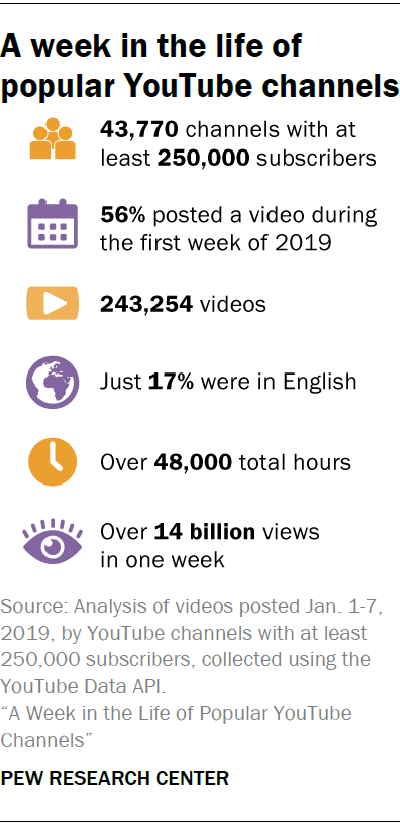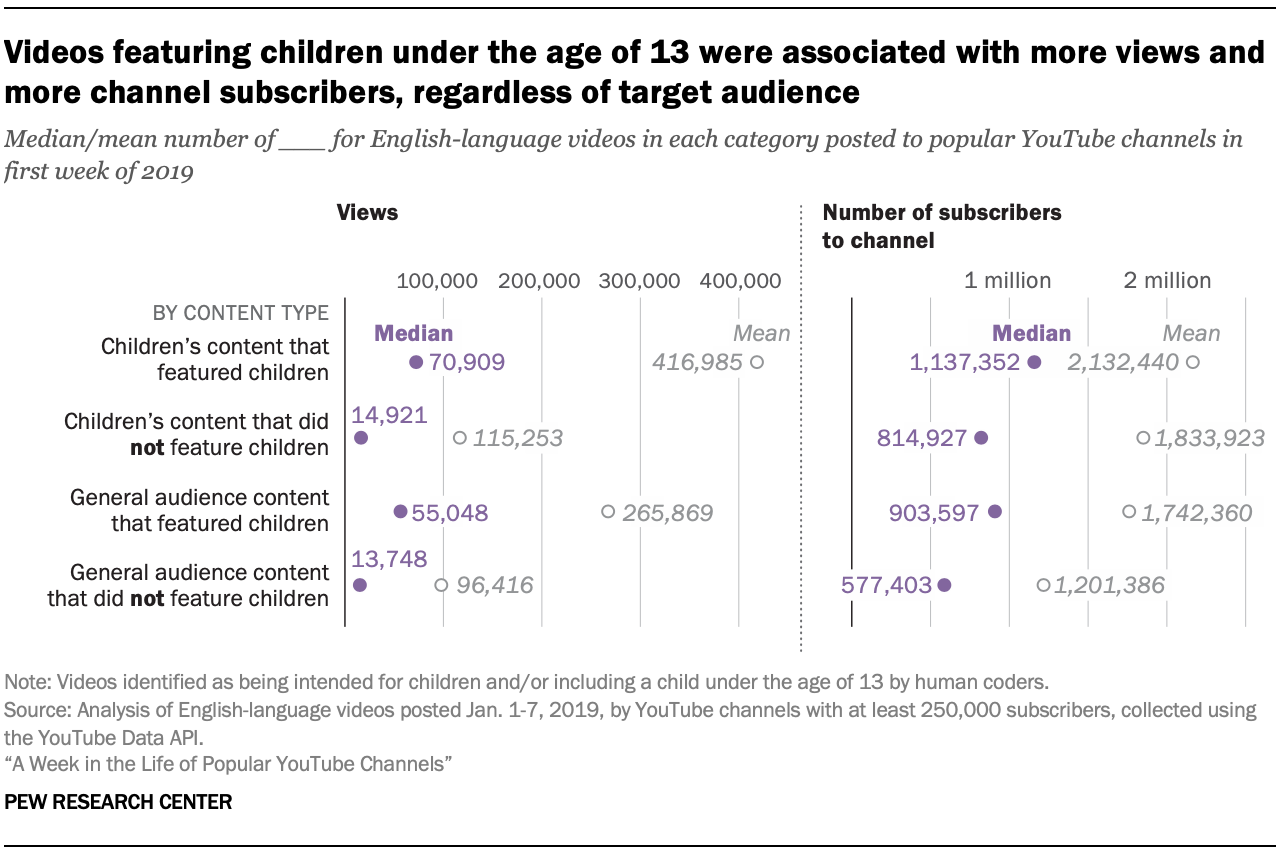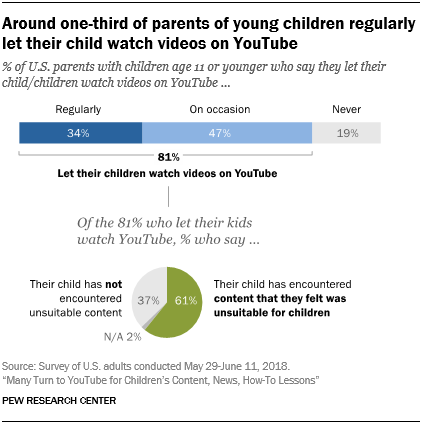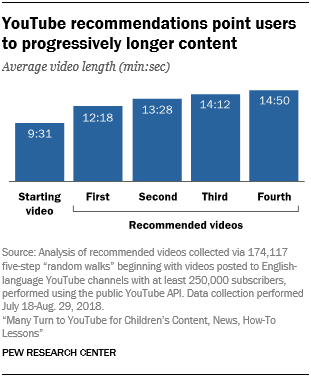
YouTube is one of the most popular online platforms in the United States. The video-sharing site serves as a forum for entertainers, commentators, businesses and others, and Americans use it in a variety of ways, from getting the news to learning new skills. At the same time, YouTube has faced scrutiny – as other online platforms have – about issues including online harassment, misinformation and the impact of technology on children.
Using a combination of public opinion surveys and large-scale data analysis, Pew Research Center has studied YouTube in recent years to better understand the content that gets posted to the site and how the U.S. public engages with it. Here are 10 key takeaways from our research:
Around three-quarters of U.S. adults (73%) say they use YouTube, according to an early 2019 survey. And among 18- to 24-year olds, 90% say they use it. The only other social media platform that approaches YouTube in terms of its reach among Americans is Facebook, which was used by 69% of U.S. adults as of early 2019.

YouTube channels generate a massive amount of content every week. As of January 2019, nearly 44,000 YouTube channels had at least 250,000 subscribers. Collectively, these popular channels uploaded 48,486 hours of content and received over 14.2 billion individual views in the first week of 2019 alone, according to a Pew Research Center analysis published in July 2019. The average video was 12 minutes long and received nearly 60,000 views in the seven days after it was posted.
Most popular YouTube channels don’t produce content in English. During the first week of 2019, 56% of popular YouTube channels uploaded at least one video. Of those that did, just 33% uploaded a video in English. Across all of the videos these channels uploaded during the week, just 17% were completely in English.

A small number of channels produce the majority of content, and a small number of videos generate the majority of views. Among channels with at least 250,000 subscribers, the most active 10% were responsible for uploading 70% of all of the videos produced by these popular channels during the first week of 2019. Across all of these videos, the most popular 10% drew 79% of all of the views during the week.
Videos about video games are especially popular – and lengthy. About 18% of English-language videos posted by popular YouTube channels in the first week of 2019 focused on gaming. The median number of views for videos about video games was 34,347, compared with 11,174 for videos focused on other topics. These videos were 13 minutes long at the median, compared with 5.2 minutes for other videos.
Children’s content and videos featuring children are also very popular. While just 4% of all English-language videos posted by popular channels in the first week of 2019 were clearly aimed at children under the age of 13, these videos received more views than other videos. And videos that featured children who appeared to be under the age of 13 – regardless of target audience – drew even more engagement, averaging more than three times as many views as other types of videos.


Roughly eight-in-ten parents with children age 11 or younger (81%) say they at least occasionally let their child watch videos on YouTube, including 34% who say they do so regularly, according to the 2018 survey. Among parents who let their young child watch videos on YouTube, 61% said they have encountered content they felt was unsuitable for children. The survey did not ask parents whether they allowed their child to watch the standard YouTube or YouTube Kids, which is a special product with greater levels of parental control and monitoring.

Most YouTube users in the U.S. say they at least occasionally encounter false or troubling content on the platform. Roughly two-thirds of U.S. adult YouTube users (64%) say they at least sometimes encounter videos that seem obviously false or untrue while using the site, according to the 2018 survey. A similar share (60%) reported at least sometimes seeing videos that show people engaging in dangerous or troubling behavior.
Many Americans use YouTube to stay informed and learn new skills. Half of U.S. adults who use YouTube say the site is very important when it comes to figuring out how to do things they haven’t done before, according to a 2018 survey. It’s also common for Americans to get news on YouTube. In a 2019 survey, 28% of adults said they get news there, behind only Facebook (52%).

YouTube recommendations push users toward progressively longer videos. Around eight-in-ten adult YouTube users in the U.S. (81%) said in the 2018 survey that they at least occasionally watch the videos suggested by the platform’s recommendation algorithm. In a study of the algorithm itself, we found that YouTube recommends progressively longer videos – at least when it lacks information about the viewer needed for more personalized recommendations. After a chain of just four video recommendations, the algorithm was likely to suggest a video more than five minutes longer than the one it originally started on.
